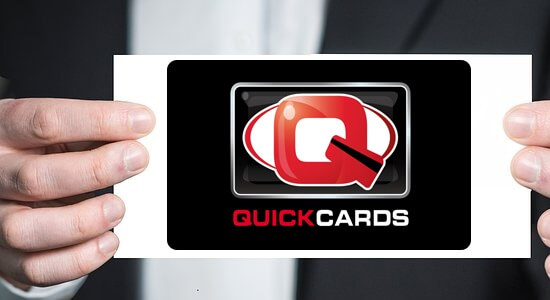
Quickcards has been in the business of creating custom plastic cards for more than 15 years. This wealth of experience, combined with innovative ideas and the use of the latest technology has enabled them to become one of the top custom plastic card manufacturers in Canada.
Over the years, Quickcards has mastered the art of quickly and efficiently producing high-quality custom cards for gift card programs and a wide variety of other uses.
- The first step in the process is selecting the right card-stock that will give you the end result that you are looking for. There are three main types of card finishes, gloss, matte or silk.
- Once the card selection has been made, the cards are loaded into the card feeder and the machine is started up. The feeder controls the speed at which the cards are fed onto the belt.
- The next step is encoding, this is where magnetic strips are encoded with your required data. This is a very complex and detailed procedure, which makes it perfect for card security.
- After the card has been encoded, it moves down the line for plasma treatment. This prepares the card surface so that the ink adheres to the plastic. Without the plasma treatment, the card would not have a smooth print finish.
- Now the custom plastic card is ready for colour printing, and this is where your unique design is added. The colour head prints cyan, magenta, yellow and black (CMYK) respectively, but instead of printing in the traditional CMYK order, Quickcards prints in a KCMY order. This may seem like a subtle difference but it means that the darker colours do not overpower the lighter ones. The machine can print fully variable, full-colour card fronts at up to 15 meters/minute, with a resolution of 360 dpi.
- The next step is to apply a clear-coat of varnish to the front of the card. This adds an extra layer of protection, making the card more durable, while also creating a smooth, reflective finish. There are three different varnish options, full, spot and none. Full varnish covers the entire front, spot only applies varnish to certain areas, and obviously none is just that, no varnish at all.
- The front of your card has all the wow factor but the back holds a lot of crucial information, including legal and personal details. Once the varnish has been applied on the front, the card is automatically flipped over and the necessary information is added to the back at speeds of up to 18 meters/minute.
- Throughout the entire process, there are many digital verifications that take place automatically. There is a verification step that actually takes pictures of the card and then it is analyzed and compared with the data file to ensure that all the information is correct and that the name on the front corresponds with the information on the back.
- When the printing on the back is complete you have the option of applying a label. Whether this is a scratch-off label covering a PIN number or an activation label, the process will be the same. All cards within a particular batch have to have the same size, type, and position of the label.
- The final step in the process is a manual inspection. Quickcards firmly believes in consistently delivering products of the highest quality, and the best way to ensure that every card meets the customer’s specifications is to visually inspect it. Rather than carry out spot checks, each and every card that comes off the machine is inspected and checked for inconsistencies, imperfections, print errors, and colour issues.
- Once every card has passed the visual inspection the order is dispatched.
Quickcards is dedicated to manufacturing top quality custom plastic cards for businesses throughout Canada and no job is too big or too small. Regardless of the size of your order, Quickcards will ensure that they deliver a top quality product to your doorstep in record time.

